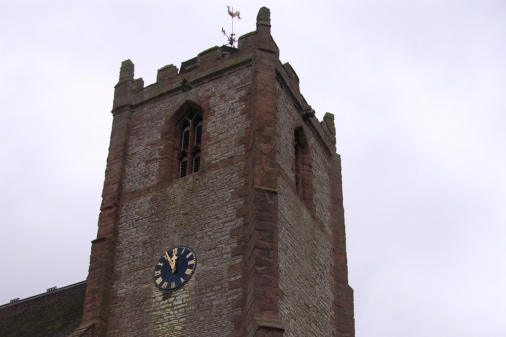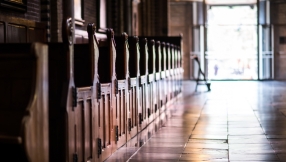
A Church of England court has rejected a plea by parishioners in a medieval rural church to replace wooden pews with more comfortable padded chairs. They can have the chairs, but without the padding, a consistory court has ruled.
The judgment comes as churches throughout the country are busy working out how to get more "bottoms on seats". In many medieval and Victorian churches, the abiding challenge is to make the seats in question a bit more comfortable.
One rural church in Warwickshire decided its woodworm-infested unforgiving Victorian wooden pews should be replaced by more comfy padded chairs.
Holy Trinity in Long Itchington, a Grade II-listed church in the Coventry diocese, dates from the late 12th and early 14th centuries and has undergone many changes over the centuries. The congregation particularly wanted more flexible seating for the popular Messy Church services, one of the "new" forms of church that are turning round decades of declining church attendance and bringing in new Christians.
Messy Church services involve games, worship and a meal. For them to take place at Long Itchington, parishioners first have to lug the heavy pews to one side.
Church members argued that padded chairs would be more "warm and welcoming" as well as easier to move.
Conservationists agreed reluctantly that the pews could go, but said that the replacement chairs could not be padded.
Far more ancient and venerable church institutions, including the Archbishop of Canterbury's own Lambeth Palace, are among those that use padded chairs.
Coventry diocesan chancellor Stephen Eyre QC said in his judgment that the new chairs would "clearly alter the appearance of the interior of the church."
Eyre said: "I accept that the interior appearance of a church should if at all possible not be off-putting to those new to it. However, it is to be remembered that an overly casual appearance can be incompatible with a house of God and can be as unattractive to newcomers as an appearance of excessive rigour.
"An emphasis on quality and seemliness is not only appropriate in buildings dedicated to the Glory of God but is also part of what attracts those new to the Church."
He argued that "properly designed unupholstered" chairs can be as comfortable as those which are upholstered. They also look equally welcoming, he said.
The consistory court judgment is among those reported by David Pocklington of Law and Religion UK. He says in his analysis of the chairs-versus-pews debate that this "is one of the most frequent changes made to churches" and is also a very emotive issue.
He compares it to Brexit, with strongly held views from both the "remain" and the "leave" sides.
He says: "Upholstered seats are not considered to be appropriate for a number of reasons: their potentially significant impact in terms of colour, texture and character which is not consonant with the quality of a highly-listed church; the need for more regular refurbishment, due to wear and tear, staining, especially in multi-use churches where it will be normal to eat and drink regularly on the chairs; difficulties in arranging and stacking; alteration of acoustics from soft furnishings."
Will Jones, operations team Supervisor and acting DAC secretary at the diocese of Coventry, told Christian Today: "The Diocese of Coventry is steward to some of Warwickshire and Coventry's finest historic buildings. It operates within national guidance, which includes a preference for unpadded seating. The aim of this is to enhance the appearance of the interior of the church and to extend the longevity of the seats.
"A well-designed unpadded seat, suitably shaped, does not need to be any less comfortable than a padded seat. Modern, stylish, unpadded seating has been introduced in, among others, St Paul's Cathedral, Salisbury Cathedral and Canterbury Cathedral, as well as many parish churches across the country."











